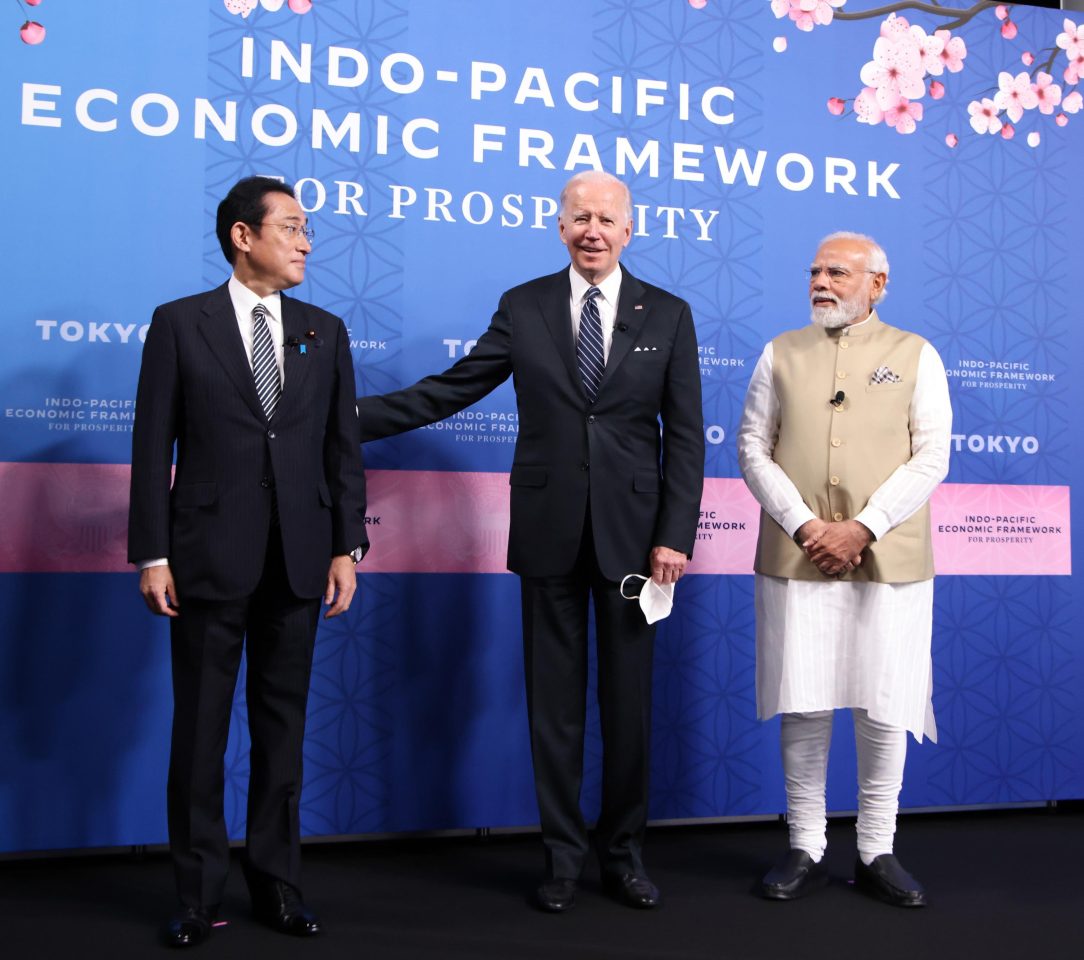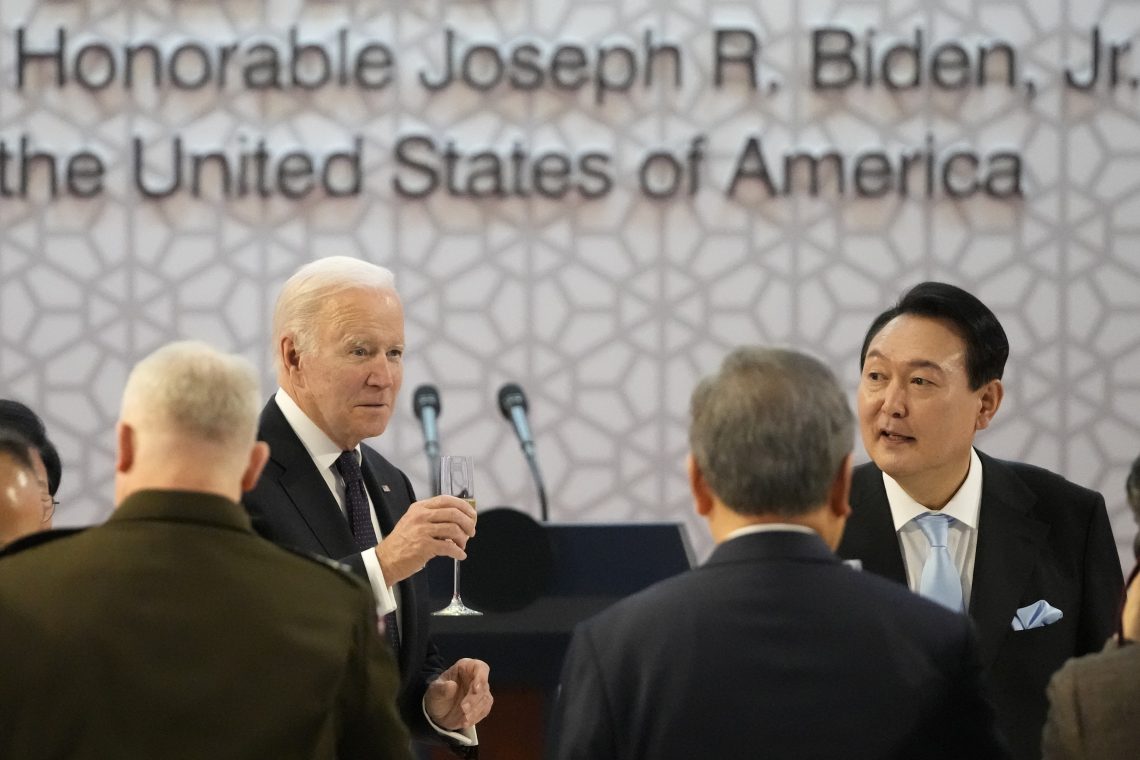Biden’s Indo-Pacific economic push lacks punch
Many Asian nations want closer economic ties with the United States. But even U.S. allies are critical of the lack of incentives and ambition in the Indo-Pacific Economic Framework.

In a nutshell
- The U.S. appears focused on unilateral rather than mutual benefits
- Indo-Pacific partners want better access to U.S. markets, reduced tariffs
- Major agreements are already working without U.S. participation
On U.S. President Joe Biden’s recent five-day trip to South Korea and Japan, Washington unveiled what it calls the Indo-Pacific Economic Framework. This drive, meant to be a “multilateral partnership for the 21st century,” is supposed to help “economies to harness rapid technological transformation, including in the digital economy, and adapt to the coming energy and climate transition.” The push for a new economic pact in Asia has become a priority for Mr. Biden, who announced on May 23 that 13 nations have joined. As White House Indo-Pacific coordinator Kurt Campbell has noted, economic engagement is “an area where the United States, indeed, needs to step up its game.”
Unfortunately, this idea looks unlikely to have any meaningful impact. While partners in Asia are eager to join any U.S.-led economic initiative, the framework currently lacks the incentives that economies in the region are looking for. It does not offer partners greater market access to the U.S. or tariff reductions. The plan also fails to consider the effect China has on regional supply chains. It appears focused on what the U.S. can gain unilaterally instead of finding mutual benefits for all potential members.
Ill-designed like this, the framework is likely to be a forgotten concept by the end of this year.
Outlines of framework
The Indo-Pacific Economic Framework is co-led by the Department of Commerce and the Office of the U.S. Trade Representative. Commerce is taking the lead in negotiating three of the framework’s four pillars: (1) supply chains, (2) infrastructure and clean energy, and (3) tax and anti-corruption, while the trade representative takes charge of (4) the free and fair-trade pillar. Through Commerce Department and trade representative outreach, we also know that within these pillars are related issues the White House is considering. They include digital and emerging technology, labor, agriculture, transparency and good regulatory practices, competition-related matters, customs and trade facilitation issues, and measures or practices that undermine market opportunities.
Given that the framework is not a trade agreement, there will not be any negotiating of tariff reductions.
While the details of these provisions are still being negotiated, the White House plans to strive for high standards, particularly in the labor and environmental provisions. Since many advanced economies in Asia are already committing to combating climate change and have robust labor protections, meeting these high standards should not be difficult. However, given the amount of political investment the Biden administration has put into restoring America’s diplomatic relationships, standards that are too high could make it difficult for some developing economies to join. And the Biden administration would prefer to have as many members as possible.
However, there is a bit of a loophole to becoming a member of the framework. To be considered a member, all a country needs to do is commit to at least one of the framework’s four pillars.
What will not be included in the Indo-Pacific Economic Framework is market access. Given that the framework is not a trade agreement, there will not be any negotiating of tariff reductions. Any market access that is discussed will be done at the regulatory level. The problem is that countries in the Indo-Pacific want to talk about market access and tariff reduction. Removing regulatory barriers is good but can have a limited impact in the grand scheme of supply chains. And while the U.S. may have abandoned negotiating trade agreements, countries in the Indo-Pacific are still moving ahead with the deals like the Comprehensive and Progressive Agreement for Trans-Pacific Partnership and the Regional Comprehensive Economic Partnership.
And so, those most critical of the Indo-Pacific Economic Framework tend to be America’s closest partners in the region who want the U.S. to get back involved in the trade game.
Besides the lack of ambition U.S. partners see in the framework, there are also concerns and skepticism about its organization. Given that the framework is co-led by the Commerce Department and the trade representative, countries are unsure with which agency they should primarily negotiate. The State Department usually has a role in coordinating such international efforts, but its officials are preoccupied with the war in Ukraine. At the same time, there is skepticism about how much commerce and the trade representative are working together and with other relevant government departments, for example, energy and agriculture.
There is also skepticism about what kind of bandwidth commerce and the trade representative will have in implementing the framework. They have other bilateral and multilateral initiatives, such as a new strategic commercial dialogue with Australia, a partnership on trade with Japan, trade and technology dialogues with Taiwan, and so on. There is also the work at the Asia-Pacific Economic Cooperation, for which the U.S. will host the summit next year. The new framework may be too much for the Biden administration with all its other initiatives.

Getting the U.S. back in Asia
The demand for U.S. economic engagement has been strong for years. Officials from Japan, America’s closest economic partner in Asia, would still like the U.S. to rejoin the Comprehensive and Progressive Agreement for Trans-Pacific Partnership.
U.S. domestic politics make new trade deals hard to achieve.
Officials from Taiwan have doubled down on trying to make the U.S. engage on a bilateral trade agreement. But U.S. domestic politics make new trade deals hard to achieve. While the U.S. is still a strong economic partner in Asia, given the amount of investment and trade with Asian countries, its economic agreements across Asia are like patchwork – focusing more on the U.S.’s largest trading or strategic partners.
Developing economies in Asia want to see more U.S. economic engagement too. According to an annual survey of those from the Association of Southeast Asian Nations (ASEAN), 68 percent would welcome growing regional economic influence by the U.S., and 64 percent are also worried about China’s growing economic impact. It doesn’t help that 77 percent say they see China as the most influential economic power in Southeast Asia – even over the influence of ASEAN (8 percent) or the U.S. (10 percent). Despite America not taking part in the Regional Comprehensive Economic Partnership and Trans-Pacific Partnership, 30 percent say they also see the U.S. as leading global free trade.
Scenarios
Countries across the region want to join the Indo-Pacific Economic Framework, including Japan, Taiwan, and South Korea. They want to work with the U.S., especially on emerging issues like the digital economy and help to set a standard for future endeavors. India has also reacted favorably to the framework.
However, some of these partners are also among the most critical of the framework, given its limited scope and untenable standards. Developing economies are also interested in joining, so long as the benefits are at least equal to the cost of implementing any new rules. As of now, the framework seems to ask how Asia can help the U.S. more than how America and Asia can mutually benefit from this. The cost to developing economies might be too high this time.
The Biden administration can still expect a good number of countries to apply to the framework. Japan, South Korea, Australia, New Zealand, Singapore and Taiwan are easy candidates to join. Vietnam, the Philippines, Thailand, Cambodia and Indonesia might also look to join, but it will be more difficult. Then again, they could commit to only one of the framework’s four pillars to still be considered a member.
The framework could look more like a diplomatic win than an economic one from this outcome. Meanwhile, it is unlikely all members of ASEAN will join, given their inability to meet the higher standards or their animosity toward the U.S. Of course, it is doubtful that China will be invited to join.
No matter how many members, the substance of the framework still lacks ambition. One major success may be a digital trade agreement. The Comprehensive and Progressive Agreement for Trans-Pacific Partnership – with Japan, Australia, Vietnam, New Zealand and Singapore as members – already has a digital chapter that is in force. The U.S. and Japan have a similar agreement, and Singapore and Australia have a separate Digital Economy Agreement. Singapore has been advocating for its Digital Economy Partnership Agreement as well. This topic will likely prove one of the few areas of success.
When the framework starts to interfere with other initiatives, including bilateral work and activities of the Asia-Pacific Economic Cooperation, it could become less of a priority for the U.S. Not very meaningful to begin with, this initiative will quickly lose steam and be put on the back burner by the end of the year.







